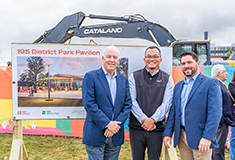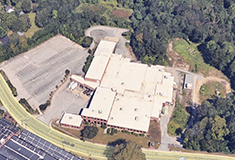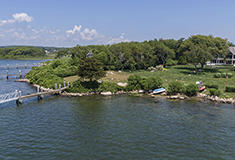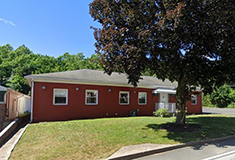News: Rhode Island
Posted: July 11, 2008
Commuter rail seen boosting local housing market
Something is happening in Rhode Island that promises to provide a real boon to the shelter industry, but many members of the Rhode Island Builders Association (RIBA) may not be aware of it.
It's the planned improvement of commuter rail service in parts of the state that already have it, and its expansion into some key areas that don't. And it's the implications for increased housing demand that the rail projects are expected to bring.
All part of "intermodal planning," the vision is to integrate various kinds of transportation to get people smoothly from their homes to their destinations and back, using cars as infrequently as possible. It involves meshing everything from bicycles to buses to trains to good old leg power, using as much existing infrastructure as is practical.
Central to this effort is commuter rail transportation and the extensive rail infrastructure that already exists in Rhode Island as part of the northeast corridor system between Boston and Washington. Primary among these projects is the Pawtucket-Central Falls Commuter Rail Facility, which involves rehabilitating the old Pawtucket-Central Falls railroad station and providing ample parking for cars and bicycles, along with easy access for buses.
According to Pawtucket director of planning Michael Cassidy, the boost for local housing is already becoming clear.
"There are five residential rehabilitation projects already being built or planned in the area of what will be the Pawtucket-Central Falls Commuter Rail Facility," Cassidy told an April 24th gathering of the Rhode Island chapter of the American Planning Association (RIAPA).
"Especially with gasoline prices soaring, the expansion of commuter rail will bring with it a substantial boost for the housing market in areas where commuter rail becomes more accessible."
Along with Pawtucket-Central Falls, areas being targeted for new or improved commuter rail service include the Warwick Intermodal Station, which will connect Amtrak passengers and local commuters with T.F. Green Airport; the new Wickford Junction railroad station and parking garage; along with improvements to, and revival of, railroad stations in Cranston, East Greenwich, Kingston and Westerly.
Further commuter rail improvements are planned as part of the Aquidneck Island Passenger Rail/Bicycle Path project. There are also plans to extend the MBTA commuter rail system one more stop, from Franklin, Mass., to Woonsocket.
"This efficient and economical transportation system will not only attract more residents to nearby areas, it will improve housing values in those areas as well," said Stephen Devine, chief of program development, division of intermodal planning, R.I. Dept. of Transportation.
Cassidy pointed out that some existing residents near the planned rail facilities aren't entirely pleased with the prospect of improved rail service.
"There is some concern about gentrification of the old neighborhoods. But if people can walk to a station and get a quick, clean ride to work, they will come. Existing homeowners will come to appreciate it when their property values start rising," Cassidy said.
The RIAPA meeting took place at the Blackstone River Valley National Heritage Corridor Visitors Center in Pawtucket, which also houses that city's planning department. Some 20 municipal planners and transportation officials attended.
Paul Eno is the owner and editor-in-chief of New River Press, Woonsocket and is the publisher of Rhode Island Builders Assn.'s monthly The Rhode Island Builder Report.
Tags:
Rhode Island
MORE FROM Rhode Island
Shawmut Design and Construction breaks ground on the 195 District Park Pavilion in Providence, RI
Providence, RI Shawmut Design and Construction celebrated the ceremonial groundbreaking for the 195 District Park Pavilion, marking the start of construction on a facility that will feature year-round dining and support space for park operations. In addition to the 3,500 s/f building, the project will include infrastructure upgrades








